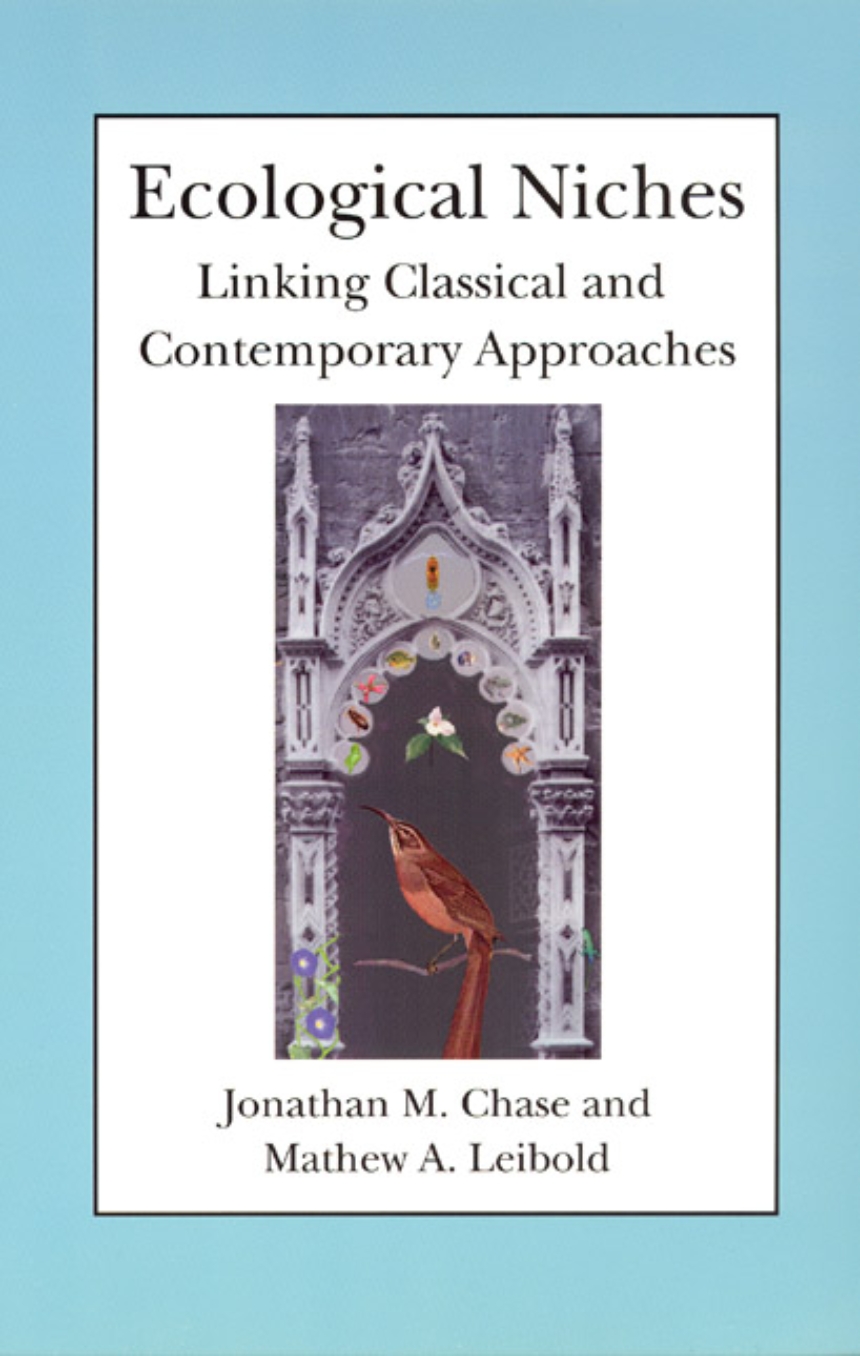Ecological Niches
Linking Classical and Contemporary Approaches
9780226101804
9780226101798
9780226101811
Ecological Niches
Linking Classical and Contemporary Approaches
Why do species live where they live? What determines the abundance and diversity of species in a given area? What role do species play in the functioning of entire ecosystems? All of these questions share a single core concept—the ecological niche. Although the niche concept has fallen into disfavor among ecologists in recent years, Jonathan M. Chase and Mathew A. Leibold argue that the niche is an ideal tool with which to unify disparate research and theoretical approaches in contemporary ecology.
Chase and Leibold define the niche as including both what an organism needs from its environment and how that organism’s activities shape its environment. Drawing on the theory of consumer-resource interactions, as well as its graphical analysis, they develop a framework for understanding niches that is flexible enough to include a variety of small- and large-scale processes, from resource competition, predation, and stress to community structure, biodiversity, and ecosystem function. Chase and Leibold’s synthetic approach will interest ecologists from a wide range of subdisciplines.
Chase and Leibold define the niche as including both what an organism needs from its environment and how that organism’s activities shape its environment. Drawing on the theory of consumer-resource interactions, as well as its graphical analysis, they develop a framework for understanding niches that is flexible enough to include a variety of small- and large-scale processes, from resource competition, predation, and stress to community structure, biodiversity, and ecosystem function. Chase and Leibold’s synthetic approach will interest ecologists from a wide range of subdisciplines.
221 pages | 60 line drawings, 3 tables | 6 x 9 | © 2003
Biological Sciences: Biology--Systematics, Ecology, Evolutionary Biology
Reviews
Table of Contents
Preface
Chapter One: Introduction: History, Context, and Purpose
Chapter Two: Revising the Niche Concept: Definitions and Mechanistic Models
Chapter Three: Comparing Classical and Contemporary Niche Theory
Chapter Four: Designs and Limitations of Empirical Approaches to the Niche
Chapter Five: Incorporating Biological Complexities
Chapter Six: Environmental Variability in Time and Space
Chapter Seven: Species Sorting in Communities
Chapter Eight: Community Succession, Assembly, and Biodiversity
Chapter Nine: Niche Relations within Ecosystems
Chapter Ten: The Evolutionary Niche
Chapter Eleven: Conclusions
Chapter One: Introduction: History, Context, and Purpose
Chapter Two: Revising the Niche Concept: Definitions and Mechanistic Models
Chapter Three: Comparing Classical and Contemporary Niche Theory
Chapter Four: Designs and Limitations of Empirical Approaches to the Niche
Chapter Five: Incorporating Biological Complexities
Chapter Six: Environmental Variability in Time and Space
Chapter Seven: Species Sorting in Communities
Chapter Eight: Community Succession, Assembly, and Biodiversity
Chapter Nine: Niche Relations within Ecosystems
Chapter Ten: The Evolutionary Niche
Chapter Eleven: Conclusions
